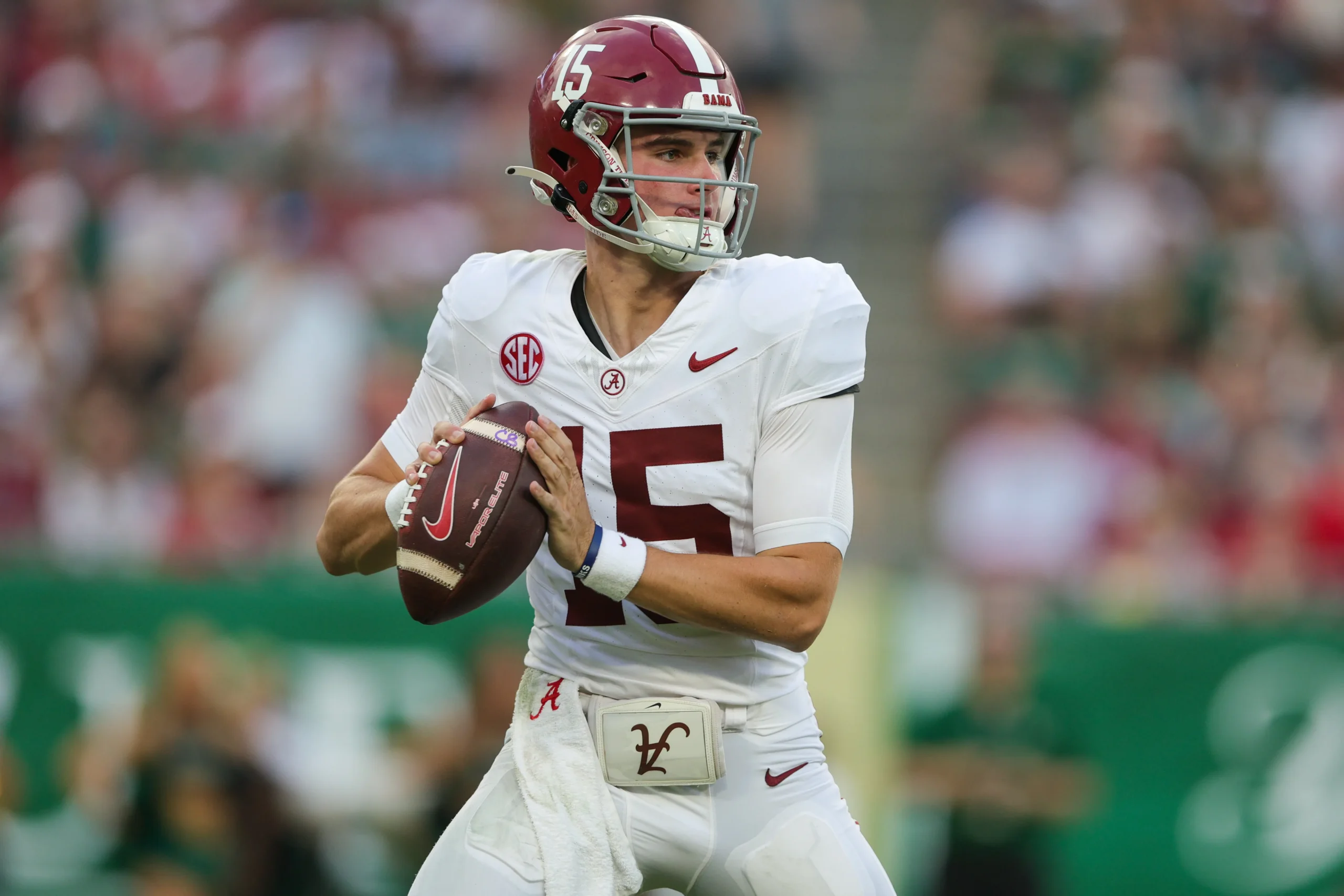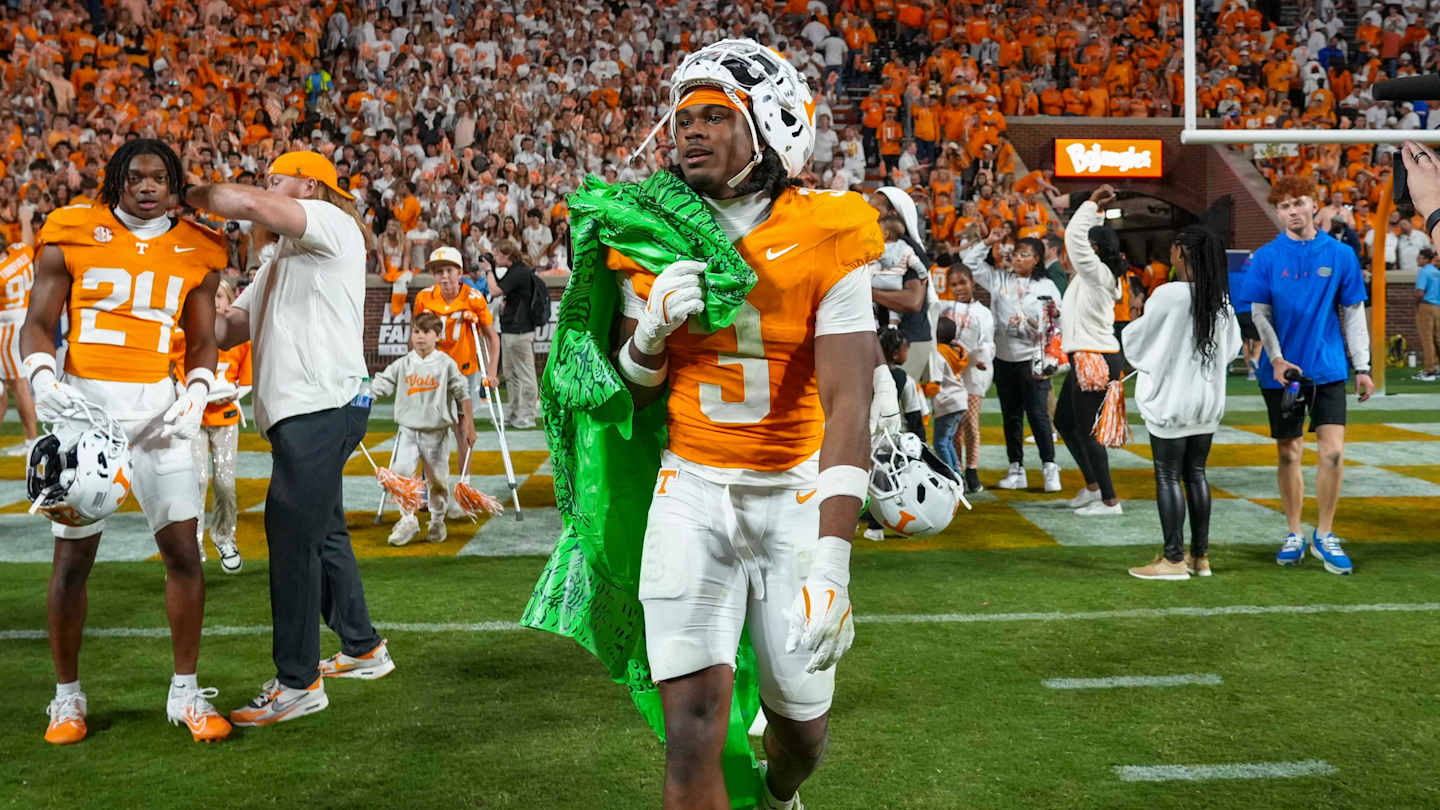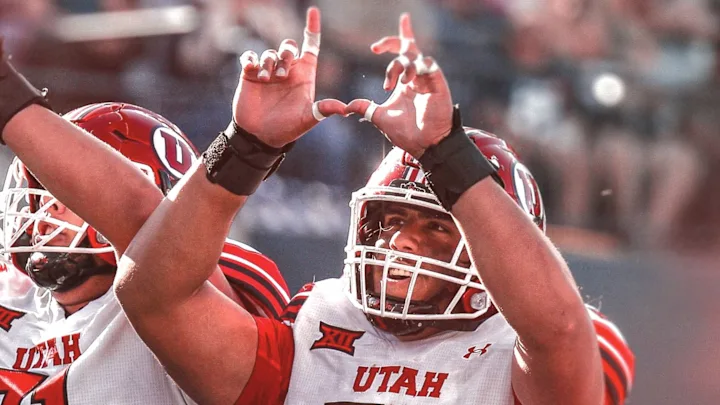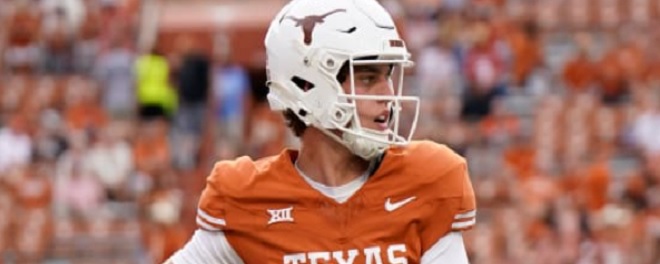By Charlie Campbell.
Send Charlie an e-mail here: [email protected]
Follow Charlie on Twitter @draftcampbell for updates.
This page was last updated April 7, 2022. Follow me @walterfootball for updates.
Position Review: Interior Offensive Linemen
Interior OL Class
Early-round talent: A-
Mid-round: C+
Late-round: C+
Overall grade: B
Merging the 2022 and 2021 prospects
Alijah Vera-Tucker
Kenyon Green
Zion Johnson
Tyler Linderbaum
Landon Dickerson
Aaron Banks
Josh Myers
Creed Humphrey
Ed Ingram
Jamaree Salyer
Jalen Mayfield
Wyatt Davis
Luke Fortner
Luke Goedeke
Kendrick Green
Chasen Hines
The interior offensive line class of the 2021 NFL Draft had only one first-rounder, but it had some depth for Day 2. The talent is better for the 2022 NFL Draft, with three interior offensive linemen likely to end up as first-round picks. None of those three will last long if they were to slip to Day 2. This year does not have as good of depth as 2021, but there are still some quality interior line prospects who will be selected during the 2022 NFL Draft.
If you were to merge the two classes together, Alijah Vera-Tucker would definitely be the top lineman as he went in the top half of the first round in 2021 and none of the 2022 first-round candidates are likely to go as top-20 picks. Kenyon Green, Zion Johnson and Tyler Linderbaum, however, are better prospects than 2021 second-round picks of Landon Dickerson, Aaron Banks, Josh Myers and Creed Humphrey. Ed Ingram and Jamaree Salyer are on a par with late second-rounders Myers and Humphrey. Jalen Mayfield and Wyatt Davis are slightly better prospects than Luke Fortner and Luke Goedeke. Kendrick Green is a better prospect than Chasen Hines.
Safest Pick: Kenyon Green, Texas A&M

Previous Picks:
2021: Alijah Vera-Tucker
2020: Tristan Wirfs, Cesar Ruiz
2019: Cody Ford, Eric McCoy
2018: Quinton Nelson, Billy Price
2017: Forrest Lamp
2016: Sebastian Tretola, Nick Martin
2015: Brandon Scherff, Cam Erving
2014: Xavier Sua’Filo, Weston Richburg
2013: Chance Warmack, Barrett Jones
This was a tough choice because I believe Green, Zion Johnson and Tyler Linderbaum are all safe picks to be good pro starters. Green won me over because he is such a well-rounded player and has a lot of experience. Green excelled despite playing in the toughest division of the toughest conference of college football. He was a soild run blocker and pass protector who also saw action at left tackle. In the NFL, I think Green will be a rock-solid starting guard, and he is probably one of the safest picks to become a solid pro from the first round of the 2022 NFL Draft.
Biggest Bust Potential: Thayor Munford, Ohio State

Previous Picks:
2021: Trey Hill
2020: Damien Lewis, Jake Hanson
2019: Ross Pierschbacher
2018: Scott Quessenberry
2017: Pat Elflein
2016: Cody Whitehair, Jack Allen
2015: Jeremiah Poutasi, Hroniss Grasu
2014: Chris Watt, Marcus Martin
2013: Brian Winters, Travis Fredrick
Munford could end up being a second-day pick as he is a solid blocker, but is not overly special and does not have a dominant trait. Munford might top out as a backup quality player and that would not be a good value for a second-day draft pick.
Interior Offensive Lineman Rankings by Attributes
Pass Protection:
NFL prototype: Quenton Nelson, Colts
- Kenyon Green
- Zion Johnson
- Tyler Linderbaum
- Ed Ingram
- Luke Goedeke
- Luke Fortner
- Jamaree Salyer
- Chasen Hines
Recap: The NFL is a passing-driven league, so keeping a clean pocket as a pass blocker is the attribute that the majority of teams consider first. Coaches want the guards to keep defensive tackles from gaining penetration or causing disruption. If the guards are successful, quarterbacks can step up in the pocket to avoid edge rushers. This helps out the offensive tackles significantly. Additionally, good guard/center play provides better throwing lanes for the quarterback.
As a pass blocker, Green has quality feet and smooth athleticism for such a big body. He has the ability to use his feet to wall off speed rushers and get depth in his drop. With rare agility for a big, thick blocker, Green is able to handle speed rushers coming off the edge. His size also leads to him having a good anchor to stonewall bull rushes and keep them from pushing him back into the pocket. Green’s pass-protection skills looked better at guard compared to when he was forced to play tackle. For the NFL, he should be an asset at guard and might be able to play some tackle in an emergency.
Johnson is a technician with impressive playing strength. In pass protection, he has good hand placement and knee bend. That helps him to hold his ground and sustain blocks. On top of possessing the upper body strength to tie up defenders. Johnson’s thick lower body allows him to sink his weight and anchor against bull rushes. He has enough quickness, athleticism, and feet to slide and mirror, but he could use some work for taking on NFL speed rushers.
Linderbaum is rock solid in pass protection. He bends at the knee and has excellent body lean. With his quickness and loose ankles, Linderbaum can glide and slide to keep himself between speed rushers and the quarterback. Linderbaum has a strong lower body that lets him sink his hips to stonewall bull rushers. With guard-tandem blocks, Linderbaum packs a punch and eats up defensive tackles. He will be an asset in the NFL to help maintain a clean pocket and provide his quarterback room to step up.
In pass protection, Ingram has a strong anchor and can stand up bull rushers. Quick interior defensive linemen with length can give him problems because they can fire by him and use their length to keep him from getting a hold of them. Fast interior defensive tackles or defensive ends who move inside in passing situations could give Ingram problems in the NFL, especially early in his career.
Goedeke is a reliable pass protector who anchors strongly and has the ability to sink his weight to stuff bull rushes. Goedeke could stand to continue to improve his feet to mirror speed rushers, and he can get himself in trouble lunging after fast defenders. To cover his lack of length, Goedeke could be a better fit for guard in the NFL.
In pass protection, Fortner shows the ability to anchor, and he can hold his ground against bull rushes from heavy defensive tackles. He won’t be a liability taking on 3-4 defenses with a good zero-technique nose tackles who aim to collapse the pocket. Fortner can sink his hips and is strong at holding his ground. Executing double teams with his guards is not an issue either, and Fortner should be a helpful tandem blocking on problematic interior linemen.
Salyer has pass-blocking potential for the NFL after playing left tackle – along with the rest of the offensive line positions – for Georgia. With the strength in his hands and upper body, Salyer can knock defenders off balance and keep them from working up field. He shows the strength in his base to grapple and tie up power defenders. Salyer lacks the size to play on the edge, and he does not have the feet to mirror on the edge. He also needs to improve his anchor and ability to drop his weight. Inside at guard, Salyer could have issues with fast interior pro rushers, and he will need work on blocking them for the next level.
Hines was a steady and reliable pass protector at LSU. He has strong hands that rock defenders and often knock them off balance to slow them down. Those strong hands also help him to sustain blocks, although he could stand to improve his hand placement. Hines has good size and strength, letting him stop bull rushes. His weight can be a problem, however, because when he gets heavy, his weight can extend over his toes and cause him to have problems in pass protection. Hines must stay on top of his weight and conditioning in the NFL to remain a functional pass protector.
Run Blocking:
NFL prototype: Quenton Nelson, Colts
- Kenyon Green
- Zion Johnson
- Ed Ingram
- Luke Goedeke
- Tyler Linderbaum
- Jamaree Salyer
- Chasen Hines
- Luke Fortner
Recap: The interior of the offensive line is the engine of a good running game. Those linemen are the most important blockers for opening holes up the middle in addition to pulling or moving on stretch runs. Dominant guards and centers who can open up holes even when defenses know the run is coming provide a mental edge, especially late in games. This is a pretty good class of run blockers.
Green can generate movement in the ground game, where he will lean on defenders, get within their frame, and push and manipulate them. Green has the strength to push defenders out of their gaps and open holes. As a run blocker, Green packs a punch off the line, sustains his blocks with strength, and moves defenders the direction he wants them to go.
In the ground game, Johnson is a real force, knocking defenders backward to open up holes at the point of attack. He is strong and physical, sustaining his blocks and riding defenders out of their gaps. While Johnson is not an all-world athlete with shocking quickness, he has enough speed and agility to get to blocks on the second level.
As a run blocker, Ingram has heavy hands and sheer power at the point of attack to generate movement. He can get under a defensive tackle’s pads and use his strength to manipulate them out of their gap. Finding nasty bullies up front is getting more difficult as the uptempo and spread offense concepts have changed the game, and Ingram is the rare lineman who enters the NFL with a mean streak to set a physical tone at the point of attack. Ingram blocks through the whistle, pushes defenders around, buries them into the ground, and finishes them off with violence. He has developed strength to push defenders out of their gaps and open holes in the ground game. Ingram can sustain his blocks after shocking defenders back.
Goedeke shows good technique and strength at the point of attack in run blocking. He will rock defenders backward with his strength, and once he gets his hands on defenders, he stalls them out and keeps them from making plays by moving them at the point of attack. With his hand placement and technique, Goedeke sustains blocks well and keeps second efforts from happening. The converted tight end has solid mobility and enough athleticism to be movement blocker. Goedeke could be a fit either a zone scheme or a power-man scheme.
Linderbaum is not overwhelmingly powerful in run blocking, but he has good strength. Linderbaum will tie up, turn, and manipulate defenders to move them away from his running back. Linderbaum’s speed makes him a real weapon to pull or spring backs for gains with a key block at the second level. Iowa has been an offensive-line factory for the NFL, and that can be seen in Linderbaum’s development as he is a technician with intelligence and toughness.
In the ground game, Salyer is a tough blocker who has the ability to push defenders and create movement at the point of attack. Salyer fires off the ball and has the strength to rock defenders backward and shove them out of their gaps. He has an attitude and blocks through the whistle, looking to punish defenders. Salyer uses heavy hands and does a good job of sustaining blocks to prevent second efforts. Sometimes, he oversets and lunges, leading with his helmet, especially at the second level, and that causes him to get over extended. Overall though, Salyuer should be a good contributor in the ground game as a pro.
Hines was a productive run blocker for LSU, which had a lot of success running behind him. He is powerful at the point of attack with strong hands to rock back defenders. With his thick build and upper body, Hines can drive block and get a push. He does have some issues with bending at the waist at times, and that can limit his push in the ground game. Along with that issue, Hines can have issues with his weight, and that leads to him lunging which leaves his weight over his toes. Thus, he is a better fit for a power-man scheme rather than a zone-based one.
As a run blocker, Fortner is strong at the point of attack. He can control and manipulate defenders while showing good technique to hit combo blocks or get to the second level. Fortner will not be overwhelming as an interior run blocker who blasts defenders off the line, but he is well-rounded, tough and effective.
Zone Blocking:
NFL prototype: Josh Sitton, Retired
- Tyler Linderbaum
- Kenyon Green
- Zion Johnson
- Ed Ingram
- Chasen Hines
- Luke Goedeke
- Luke Fortner
- Jamaree Salyer
Recap: The zone-blocking system is run by a number of NFL teams, and the success of the scheme has many power-man teams adding some zone concepts into the playbook. The zone scheme calls for guards and centers to have the ability to move well laterally and downfield to help set up a moving wall with cut-back lanes. Interior linemen need athleticism and quickness in order to be effective.
Linderbaum has excellent speed, athleticism, and the agility to move in space. He would be a great fit in a zone-blocking scheme because he is agile to get in position and is very fast to the second level. He would be a good fit for a zone scheme.
Green, Johnson, Ingram and Hines would be fine fits in a zone-blocking scheme. None of them is a dominant athlete or exceptionally fast, but they all have enough quickness and agility to execute zone plays.
Goedeke, Fortner and Salyer are more natural fits for a power-man scheme. They have some ability to execute somewhat in a zone scheme as they all ran some zone plays in college, but all three would probably be better fits in man schemes.
Power Man:
NFL prototype: Quenton Nelson, Colts
- Kenyon Green
- Zion Johnson
- Ed Ingram
- Luke Goedeke
- Chasen Hines
- Jamaree Salyer
- Tyler Linderbaum
- Luke Fortner
Recap: A lot of teams in the NFL run a power man-blocking scheme. Interior linemen for this scheme need the ability to defeat their defender to blast open or seal a running lane. Guards need to have the power to move defenders and sustain blocks while centers need to be able to contribute in some one-on-ones and execute well on double teams with their guards.
In the ground game, Green is a force at the point of attack who has strong hands and the power to be a drive blocker. Green has heavy hands that shock defenders backward and drive them out of their gaps. His length and ability to sustain blocks make him tough to shed as he turns and manipulates defenders. Green is a power run blocker who should be an excellent fit in a man scheme.
Johnson is a tough blocker who has the ability to bull defenders and create movement at the point of attack. With his strength and power to drive block, he is an excellent fit in a man-blocking scheme. Ingram, Hines and Goedeke are also better fits for power-man schemes than zone. They have thick, strong frames that fit a man scheme well.
Salyer could execute in a power-man scheme in the NFL. Linderbaum and Fortner may not have the power to drive block, but in tandem with a guard, either could be functional. They both could struggle with the heavy nose tackles.
Versatility:
NFL prototype: Zack Martin, Cowboys
- Luke Goedeke
- Kenyon Green
- Jamaree Salyer
- Luke Fortner
- Zion Johnson
- Ed Ingram
- Chasen Hines
- Tyler Linderbaum
Recap: A lot of NFL offensive line coaches want to cross-train their interior linemen for another position, especially among the backups. It helps teams in making the decision on who to keep active on game days. Linemen who can play more than one position are highly valued. Coaches like guards who can play center or tackle if there is an injury in the middle of a game.
Goedeke played tackle, but he projects to guard as a pro. He could still play right tackle in a pinch. Green played guard and tackle for the Aggies. As a pro, he should start at guard, but he could help at tackle in an emergency. Salyer played tackle, guard and center for Georgia. For the NFL, he really only fits at guard, but he could help out at those other positions in an emergency. Fortner could play guard or center.
Johnson, Ingram and Hines are guards only. Linderbaum is a center only for the NFL because he lacks the size to play guard.
Pulling:
NFL prototype: Zack Martin, Cowboys
- Tyler Linderbaum
- Kenyon Green
- Zion Johnson
- Ed Ingram
- Luke Fortner
- Luke Goedeke
- Chasen Hines
- Jamaree Salyer
Recap: Pulling is necessary for a man-blocking system to work. Zone teams are becoming more diverse and are mixing in more power-man plays that have guards pulling. The quick and athletic interior linemen of zone schemes do better pulling than isolating and charging straight ahead. Thus, a zone team will like to see a prospect’s ability to pull as well.
Linderbaum could be really dynamite as a pulling center in the NFL. He is so agile, quick and balanced in his approach. He can dish out perfect blocks in space to open holes.
Green has good feet, speed and athleticism to be an effective puller at the pro level. With his quickness and feet, he should be very good to move through trash and hit blocks in space.
Johnson, Ingram and Fortner are smart technicians, and that makes them effective at pulling. They are quick and athletic enough to get out in space to hit a block at the second level.
Goedeke and Hines can pull somewhat, but neither of them is an exceptional athlete. At Georgia, Salyer was able to do some pulling, but he is not a great fit for that in the NFL.
NFL Picks - Dec. 20
NFL Power Rankings - Dec. 17
2026 NFL Mock Draft - Dec. 17
Fantasy Football Rankings - Sept. 1




